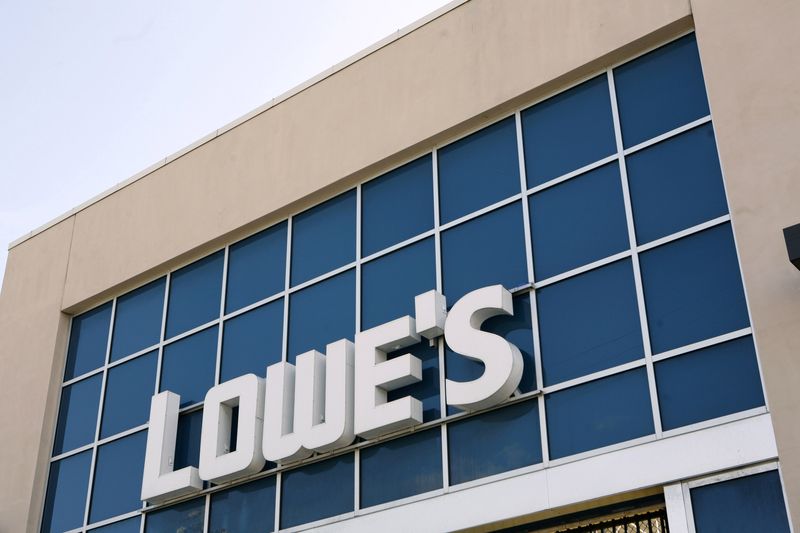Lowe's same-store sales forecast boosted by storm recovery; muted DIY spend weighs
By Savyata Mishra
(Reuters) -Lowe's Cos forecast a slower-than-expected drop in annual comparable sales on Tuesday, banking on a boost to its current-quarter sales from hurricane-related demand, although big-ticket spending remained strained.
The home improvement retailer also beat third-quarter comparable sales and profit estimates, similar to bigger rival Home Depot (NYSE:HD ), which last week said demand for building materials and paints rose amid hurricane rebuilding efforts.
Hurricanes Helene and Milton devastated parts of the United States, including Florida and North Carolina, causing extensive damage to homes, bridges, power infrastructure and crops.
Results this quarter were modestly better than expected, even excluding storm-related activity, driven by growth in the company's professional category, strong online sales and smaller-ticket outdoor DIY projects, Lowe’s (NYSE:LOW ) CEO Marvin Ellison said.
Quarterly gross margins were "a tad light" at 33.7%, analysts noted, likely driven by a low-margin product mix of storm sales.
Shares of the company fell 1% before the bell, after having risen 22% this year. It trimmed its annual adjusted margin forecast to a range of 12.3% to 12.4%, from a previous range of 12.4% to 12.5%.
Lowe's, which generates roughly 75% of sales from the do-it-yourself category, has witnessed persistent weakness as higher interest rates over the last few years made projects requiring refinancing less appealing.
"Investors will debate whether the reported comparables were good enough after the read-through from Home Depot last week. Lowe's should have skewed to more favorable conditions than HD," said David Wagner portfolio manager at Aptus Capital Advisors, which holds Lowe's ETFs.
Lowe's reported a 1.1% drop in same-store sales for the quarter ended Nov. 1, better than analysts' average estimate of a 2.86% decline, according to data compiled by LSEG.
It earned $2.89 per share on an adjusted basis, beating an estimate of $2.82 per share.
The company expects same-store sales to be down between 3% and 3.5% in 2024 from its prior forecast of a decline in the range of 3.5% to 4%.
Source: Investing.com
